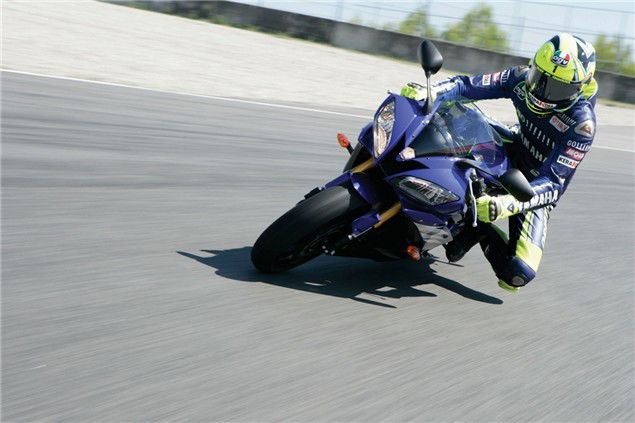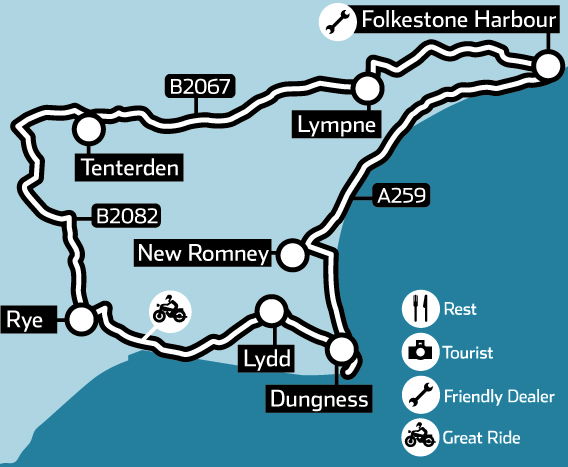MotoGP Evolution - Race tech to the road
Four years on from the advent of MotoGP, and with the 800cc formula beckoning, there's just one thing missing: the trickle-down of race tech to street bikes. Why?


Back in 1998, when Mick Doohan was in danger of boring the neutrals to death with his brilliance - that's where it all began. I remember the day very well. I was reminiscing about the on-track action while sitting in the star-studded environs of the Italian restaurant at Suzuka.
With 250cc legends eating pasta here and 500cc greats ordering tiramisu there, it was a gilded walk on the wildside of the safety barriers for a scruffy magazine staffer like me. Later on I also noticed that a solid knot of Euro-blazerati, Japanese bigwigs and sundry suits had come out of the adjacent private dining room, all with a mixture of grins, pensive looks and barely concealed wide-eyed amazement.
But, like you would if you were me at that point in time, I paid more attention to what kind of pasta Capirossi was having, and worrying about how I was going to get a whopping receipt smothered in Japanese symbols through the next round of expenses. Some time later I was told that this very meeting was the first that aired the heretical notion of the 500cc class returning to its four-stroke roots, and boosting things up to a whole litre in engine displacement.
Or I could have been told a load of bollocks about its significance, and they'd just overindulged on Sake at dinner.
Either way, most parties present at the first four-stroke meeting (whatever its venue and timing) gave it an immediate nod of approval, despite their fears of the unknown. That first agreement was the first step towards what has become modern MotoGP - the biggest business in two-wheeled history.
Despite the huge opposition the idea met with (initially) in most other quarters, it was obvious to see what would attract the big manufacturers. 500cc stroker technology was stagnant and emissions issues meant roadbike stinkwheels were well on their way to becoming legislatively obsolete. The engineers-cum-managers at the helm of the main factories loved the idea of having prototype four-strokes to play with. No more roadbike-into-racebike balance to be struck to meet national and global superbike regulations - this was Formula 1 for two wheels, lads! You could almost hear them phoning up suppliers for titanium cam followers and the latest valve lift software from a whole continent away.
The marketing people were particularly happy, because they could conjure up an endless PR attack from the four-stoke prototype racetrack glory, all the way to a record total of roadbike sales. And all thanks to the longest established class of all, which - very conveniently - already had over 50 years of global exposure.
The net result was more overall budget for racing - racing which would have more direct relevance to roadbikes in the future.
For the promoters, Dorna, it was a way to kick-start the whole ailing yawn-fest, dominated mercilessly by Doohan and Honda's NSR for what seemed like forever. And they could even get the eager factories to pay for most of it, with specialist F1-style constructor teams joining in as well.
Post 2001, MotoGP has indeed been all those things, for most of those people. What it seemed to signal for us was the return of the real race replica - and this time maybe even closer to the design of the originals than before. The reasoning was simple.
With a 990cc limit you can do the development of your next generation of hypersports litre bikes largely in the MotoGP kitchen. Then water it down, swap spicy but pricey materials for more durable and affordable roadbike ingredients, and still whip out a most astounding streetbike, with huge performance potential. It made sense in theory; unified development from the top down, keeping as much or as little MotoGP influence as you could afford in the roadbikes. Which would eventually become World Superbikes someday, pre-developed for racing to an unprecedented degree.
We would surely, imminently, see high-performance Honda vee-somethings on the street, funny front ends that actually worked, engine management systems we could tune on the go and carbon chassis for the masses. Alas though, we haven't.
For starters there was an immediate two-year clause in the regulations that you could not produce a roadbike replica, and when you did you would have to ditch the race version. That stipulation is now no longer in the rulebook, according to the FIM regs and enquiries to the powers that be, but even after four years of MotoGP the closest we've got to a 'real' replica is the promise of the V4 Desmosedici RR.
According to Ducati sources, it should be unveiled as a finished article in spring 2006 (during World Ducati Week was the original desire), then on sale '07. Personally, I can't wait for it to show up, sooner the better, even if it'll cost upwards of 50,000 Euros.
Four-stroke MotoGP has certainly been as irresistible and technologically diverse as expected, at least at the start. Full marks to all for embracing their own new ideas and giving it extreme effort, even if most things didn't work as planned for the majority of each manufacturer's first prototypes. Except the Honda, which, as we could've predicted, really worked back then, and works every bit as well now.
So where, after four years of the RC211V, is our Honda V5 with lights and indicators? Where is the syncopating beat of the 16-valve roadgoing M1, for that matter? Where is the gorgeously tiny Kawasaki Ninja, the green version of the funny firing cycle? Where is the V4 Suzuki? Or the three-cylinder replacement for the Aprilia Mille twin? (Oh that's right, Aprilia went splat, partly through trying to keep up with the Japanese Joneses. And no wonder, when you consider the next point.)
The reason why we haven't seen MotoGP roadbikes yet, or something approaching them, is down to one thing: money.

